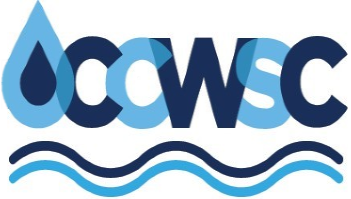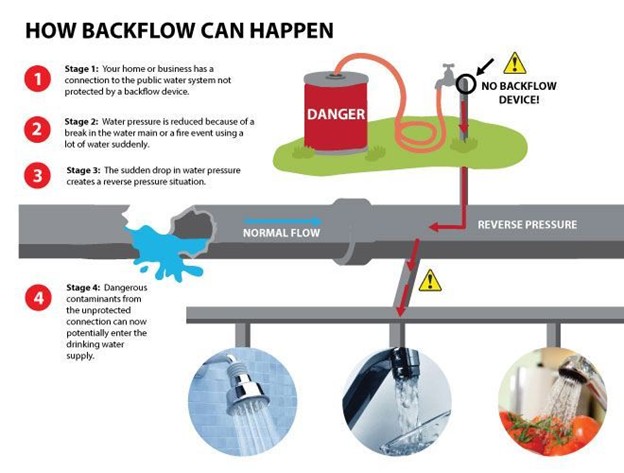Cross Country WSC Backflow
The Texas Commission for Environmental Quality (TCEQ) requires annual Backflow Testing of properties that include BOTH a Septic System and an Irrigation System that is connected to the Corporations water supply. This requirement is set by TCEQ to help ensure the safety and quality of our water supply.
TCEQ explains the requirement in the document titled, "TCEQ's Rules Regarding Managing a Cross-Connection Program." You can view the document by clicking HERE.
Below are a couple of excerpts from the document that explain the requirement.
TCEQ defines having a septic tank and an irrigation system as a "health hazard" - (Page 15) - Landscape Irrigation - "Many irrigation systems are installed on sites that have an on-site sewage facility (such as a septic tank). The existence of the OSSF elevates the classification of the irrigation system to a health hazard requiring the installation of an RP*."
*RP stands for "reduced pressure" and is a type of backflow prevention device
TCEQ requires annual testing and inspections when a health hazard exists - (Page 10) - Testing, Inspection, Certification - "Like all mechanical devices, backflow prevention assemblies are subject to failure over time and must be tested to ensure that they are operating properly and are protecting the potable-water supply. As noted above, TCEQ rules require that all backflow prevention assemblies be tested upon installation, and that assemblies installed to protect against health hazards must be tested annually."
For more information on backflow device regulations, or for further questions call our office at 254-836-9962.
Frequently Asked Questions
If my home was build prior to 2009, am I grandfathered in and exempt from these requirements?
- Homeowners are not exempt from the inspection - but the rules may be different as to what type of backflow prevention device they use
- Before 2009, a Double-Check Valve Assembly was allowed on irrigation systems installed on sites that also had an OSSF. As a result, there are currently installed irrigation systems that do not have the correct backflow prevention assembly. To address this, the current version of the landscape irrigation rules states:
- If an irrigation system is connected to a potable water supply and requires major maintenance, alteration, repair, or service, the system must be connected to the potable water supply through an approved, properly installed backflow prevention method as defined in this title before any major maintenance, alteration, repair, or service is performed. [30 TAC 344.52(a)]
- Historically, this regulation was taken to mean that systems that were installed before 2009 were essentially grandfathered until they required “major maintenance, alteration, repair, or service.” When the backflow preventer can no longer be repaired in line and must be replaced, it must be upgraded to the required RP.
- Since 2009, those installing irrigation systems on sites that also have an OSSF must be aware of the change in the required backflow prevention and install the RP.
Why have I never received one of these notices before?
- Historically, this requirement was not actively enforced by the Corporation. However, we are now taking steps to ensure full compliance with TCEQ regulations by updating our processes. In recent years, stories around the country of water contamination have required cities, and Corporations to be vigilant about protecting their water sources.
When did this become a requirement?
- While an exact start date is not available, this has been a longstanding requirement enforced by the Texas Commission on Environmental Quality (TCEQ) for many years.
How much will this cost?
- You will need to hire an inspector privately. Please contact the corporation for a list of licensed testers. The Corporation is responsible for having a backflow inspection program in place, but the charge is performed by a inspector who the resident pays directly.
|
Backflow Testing and Reports |
|
The Texas Commission on Environmental Quality (TCEQ) emphasizes the importance of preventing cross connections and backflow to safeguard public water supplies. Common household activities, such as using garden hoses with attachments or submerging hose ends, can create cross connections that may lead to contamination. By implementing proper backflow prevention measures, you can help protect both your family's health and the broader community's water quality. For detailed guidance on identifying and preventing cross connections, visit the TCEQ's resource page. |


